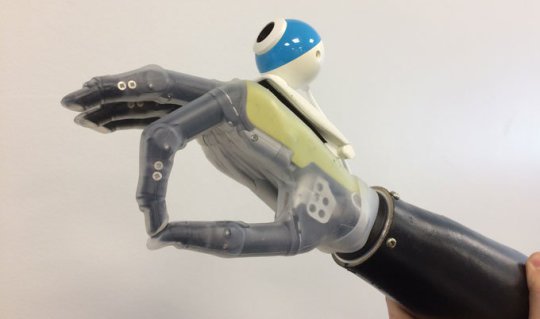A hope for amputees: a hand that can see
There are so many people around the world whose hands don’t function normally due to some injury or any other reason. This renders them dependent on others. Now, the biomedical engineers at the Newcastle University, the United Kingdom, have come up with a hope for such individuals. Yes, for the first ever time, a new generation of prosthetic limbs that enables the user to reach automatically for the items without thinking are to be trialed.
The new bionic hand is provided with a camera that instantly takes an image of the item in front of it, evaluates its size and shape, and stimulates a sequence of movements in the hand. Avoiding the normal procedure that needs the user to spot the entity, physically trigger the arm, and stimulate a motion in the prosthetic limb, the hand observes and responds in one fluid movement.
Prosthetic limbs have transformed minutely in the last 100 years; the functioning is the same even though now it is available with better design and lighter & durable materials. The scientists say that with the use of computer vision, they have designed a bionic hand that can react automatically, just as a real hand does. This can enable users to pick up a biscuit or cup with just a swift glimpse in the appropriate direction. One of the major obstacles to artificial limbs has been the receptiveness. Prosthetics seems to be cumbersome and slow as most of the amputees prefer their healthy leg or arm.
The new prosthetic hand can be controlled through myoelectric signals, i.e., the muscle’s electrical activity captured from the stump’s skin surface. With the use of neural networks, Ghazal Ghazaei, lead author, exhibited several item images to the computer and trained it to assess the grip required for diverse items.
Clustering objects by shape, orientation, and size, as per the sort of grip that would be required to pick them up, the researchers programmed the bionic hand to conduct 4 diverse ‘grasps’: palm wrist pronated, palm wrist neutral, pinch, and tripod. With the use of 99p camera placed onto the prosthesis, the bionic hand observes an entity, selects the most appropriate grasp, and a signal is sent to the hand.
Isn’t it just the right thing for the amputees?


